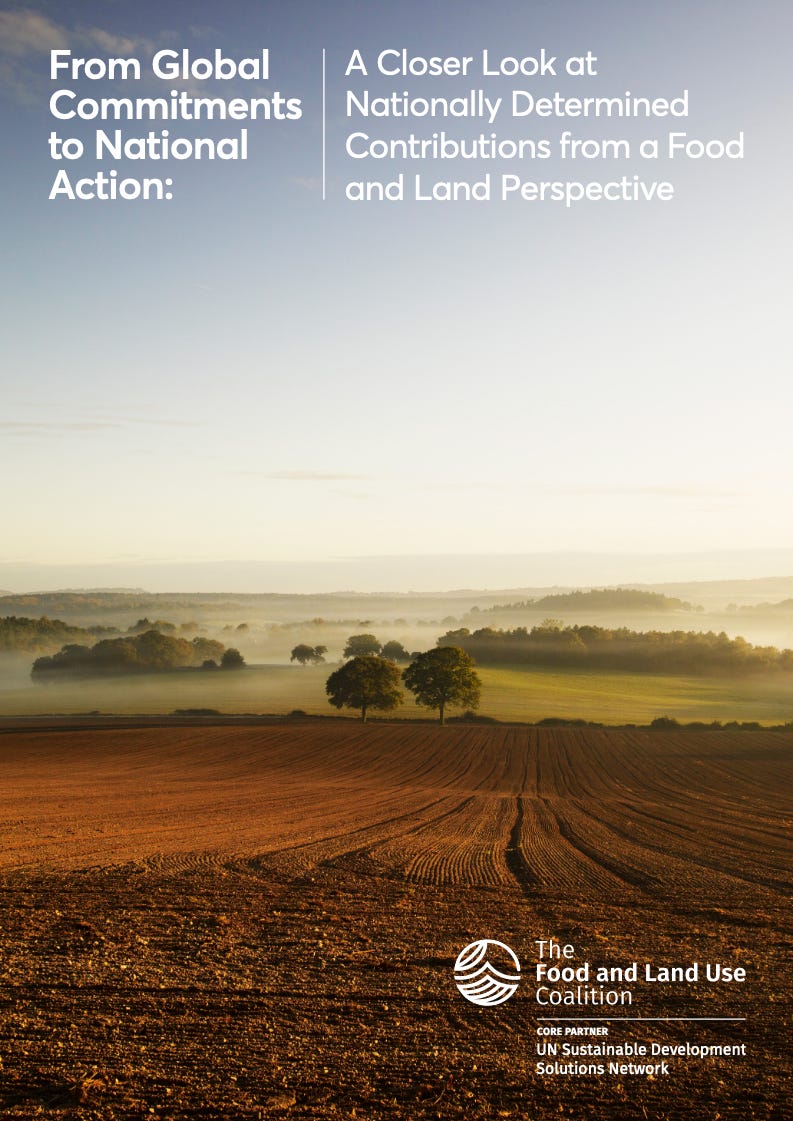The COP26 Food Desert
A newsletter about food systems, climate change and everything connected to them
I don’t mean to say people were literally starving at the UN climate meet in Glasgow, although I have heard a lot about awful fish at the canteen and how the selection isn’t exactly “plant-forward”, despite the polished PR pitch.
This is more about the lack of attention on food systems at the event, despite a mountain of evidence - as seen in many previous issues of my newsletter - that unless we sort out how our food systems function, we are going to struggle to effectively tackle climate change.
Yes, there was the launch of AIM4C - short for Agriculture Innovation Mission for Climate - a high-profile initiative led by the U.S. and the UAE, and which some rights groups criticised as “focusing on protecting the profits and power of agribusiness corporations”.
There was the declaration to “halt and reverse” deforestation by 2030, which is linked to food because agriculture expansion is one major reason why trees are cut. But even there, both Indonesia and Brazil did pretty quick reverse ferrets.
There was talk of sustainable agriculture as one of the “breakthrough areas” for innovation and finance, several side events on food-related issues, and a huge contingent of groups and organisations working in this sector.
But food systems didn’t get a dedicated day and they are largely missing from official discussions and country-level commitments. Even the pledge to cut methane emissions is unclear on whether agriculture is included.
Going into COP26, I kept thinking, “Why am I not seeing food systems issues on the agenda?” but then I was questioning myself as to whether my focus on this intersection of food and climate made me think this way. Well, I’m glad to report I’m not the only one.
This detailed piece in The Guardian by Phoebe Weston and Jonathan Watts asks pretty much the same question.
So did this piece from Food Navigator.
Even former UN Sec-Gen Ban Ki-Moon and Food Systems Summit special envoy Agnes Kalibata got into the act. The former called for “greener and more sustainable food systems” to be at the centre of climate action and the latter urged Egypt, who will host COP27, to elevate food systems as a central topic.
The Food and Land Use Coalition (FOLU) also released a report last week that analysed a first set of 15 updated or enhanced NDCs (Nationally Determined Contributions aka countries’ blueprints on how they are going to limit/reduce their emissions).
These NDCs represent “the majority of G20 members and over 60% of global emissions” and includes the European Union, Japan, Korea, Mexico, Russia, Canada, South Africa, UK and the U.S. and the findings are… for lack of a better word… not great.
"We found that, six years on from the Paris Agreement, the world’s largest emitters are still showing weak commitments and insufficient actions to reducing emissions and increasing carbon sinks in the food and land sector,” the report said.
It also found that -
Only half of the analysed NDCs mention policies that are explicitly linked to actions in the food and land sector
Only two NDCs provide specific information on funding to support transitions toward more sustainable food and land systems
The biggest gaps include a lack of focus on dietary shifts, the diversification of protein supplies or the development of local food economies.
FOLU said it plans to produce an updated brief that includes analysis of NDCs from countries such as China, India and Saudi Arabia.
The Global Alliance for the Future of Food, a strategic partnership of philanthropic foundations working on food system transformation, gave the same verdict (see above picture) in its assessment of NDCs.
It plans to look at 14 NDCs, including China, Egypt, UK, US, Colombia and Bangladesh.
“Out of 8 assessments we’ve done so far… none fully account for emissions associated with food imports, particularly those related to deforestation,” said Ruth Richardson, the Alliance’s Executive Director.
“Only Germany provides a clear commitment to move away from harmful subsidies and to promote sustainable food consumption; and, just Colombia and Kenya have put forward ambitious measures around agroecology and regenerative agriculture,” she added.
An earlier report that came out in September - the first ever food and agriculture report from the World Benchmarking Alliance - also found the sector is “not on track for transitioning to a sustainable food system”.
It looked at 350 of the world’s most influential companies which together account for more than half of the world’s food and agriculture revenue and employ more than 23 million people.
Only 7% have targets aligned with the Paris Agreement and less than half calculate indirect emissions from supply chains or have targets to curb deforestation. A measly 12 out of 233 companies have set targets to increase the proportion of healthier options and just 2 have targets to make healthy food more accessible and affordable to vulnerable groups.
A mere 8% of companies demonstrate having a comprehensive human rights due diligence mechanism in place.
So here’s me hoping that COP27 next year will be an oasis for food systems.
As always, have a great weekend! Please feel free to share this post and send tips and thoughts on twitter @thinink, to my LinkedIn page or via e-mail thin@thin-ink.net.







